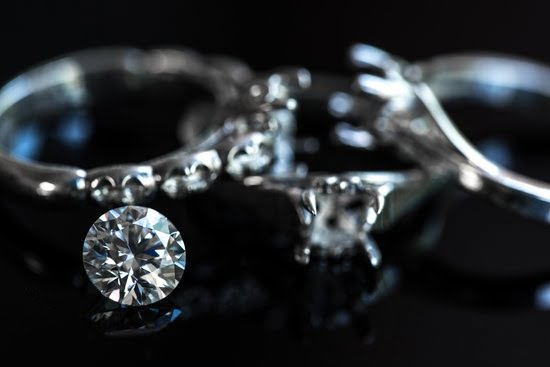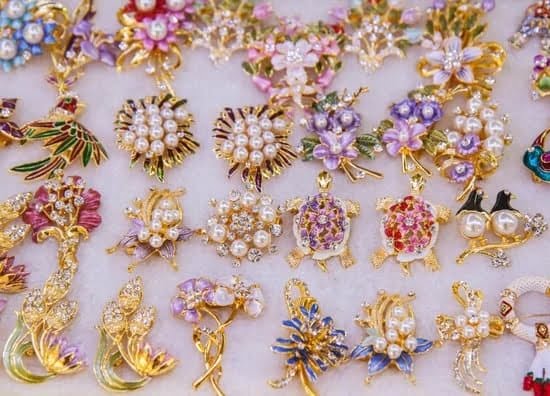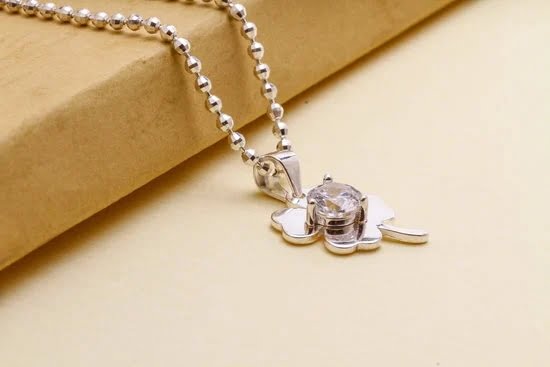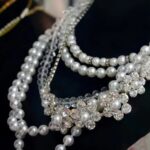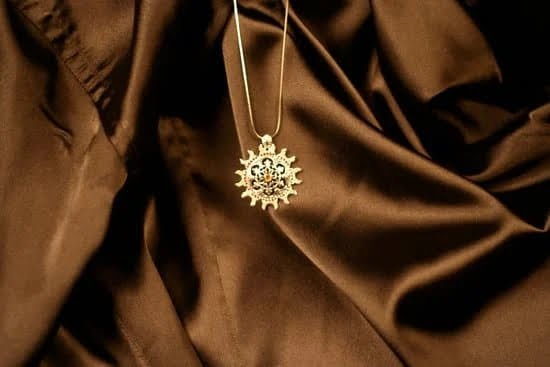Introduction
Gold melting is the process of converting gold jewelry into pure gold. It involves heating up the pieces of gold jewelry until they become molten, allowing for any impurities to be separated and disposed of. This process can be done in a professional refiner’s shop or even at home, and it has several advantages.
Benefits:
One of the key benefits of melting down gold jewelry is that it makes it easier to assess its true worth. Melting down the pieces allows jewelers to separate out any impurities that may hinder the gold’s true value, such as gemstones or other metals present in alloys. Additionally, melting allows jewelers to easily check the purity of a given piece of gold by measuring the amount of other metals remaining after melting.
Another benefit is that melting useful for helping to create custom pieces of jewelry from existing pieces. By melting down pre-existing items one can more easily shape and refine them into whatever design they like, giving them specific details and characteristics as needed. This can help jewelers get creative while making sure they’re using only valuable material with no impurities still present in their creations.
Finally, melting gold jewelry can also prove beneficial in terms of being able to sell gold easier than before when an owner wishes to get rid of their pre-existing items or just turn them into cash quickly for another purpose. Many people find selling melted down gold quite easy compared to selling unmolten pieces since jewelers tend to pay more for pure and refined material instead needing extra work on their part.
What Materials Do You Need For Melting Gold Jewelry?
In order to melt gold jewelry into pure gold, you will need a few essential tools and materials. These include an induction furnace or crucible kiln for melting the gold, a graphite crucible for handling the hot melted liquid, safety glasses and protective gear, tongs for handling the heated material and a mold to cast and shape your gold pieces. Additionally, you may want to use various alloys such as silver, platinum or copper depending on the type of jewelry you are making. You may also need casting fluxes and borax to ensure proper bonding during the melting process. Finally, have on hand some measuring tools like a digital gram scale to weigh out exact amounts of specific metals prior to mixing them together in the molten form.
How To Select The Right Furnace And Melting Tools
When it comes to melting gold jewelry into pure gold, the process requires the right furnace and melting tools. The first thing to consider when selecting the right pieces is what type of heating system and vessel must be used. An inductive furnace will be needed if you are looking to get a more precise temperature control and a far superior melting performance than that of traditional crucible furnaces. Additionally, induction models can provide an instantaneous response to target temperature changes due to their unique architecture. Moreover, if you’re not looking for a purely professional set-up, there are still numerous domestic models available which provide substantial power and sufficiently high working temperatures for the smelting of most metals.
As for the necessary vessels, graphite crucibles serve at least two purposes: they act as containments for the molten metal, insulating it from oxidation; furthermore, graphite has outstanding thermal conductive properties which allows for higher thermal efficiency during the actual process. It is also important to note that graphite works best at temperatures below 2200 degrees Celsius and therefore should not be considered when aiming for higher use cases such as gold melting. In such cases tungsten carbide or cupels (flasks made of porous clay) ought to be employed instead due to their superior heat resistance. Depending on your budget and needs regular tongs or spoons might suffice in the production of personal jewelry , however special alloys may need more specialized equipment like pinchers or dippers – tools especially crafted dependent on material parameters.
Prepping The Jewelry
Cleaning gold jewelry is an important step when attempting to melt it into pure gold. Dirt and other particles can contaminate the melting process and thus, decrease the purity of the end product. To properly clean your jewelry, use a combination of warm water and dish soap. Submerge the jewelry in the soapy water for a few minutes before scrubbing away any dirt or debris that may have accumulated on its surface with a soft brush. If necessary, drop a small quantity of isopropyl alcohol into the water to help break down more difficult residues.
Additionally, you must remove any stones embedded in the piece before attempting to melt it. The simplest way to do this is by gently prying them out, either with a pair of tweezers or needle nose pliers if they are too tight-fitting. Alternatively, you can use tiny screws (e.g., watchmaker’s screws) to loosen the stones gently without damaging them or their settings.
How To Safely Set Up A Melting Station
In order to melt gold jewelry into pure gold, you will need to ensure that you have the right materials and equipment. It is important that you set up your melting station in a safe environment, away from any combustible materials. Furthermore, it should be well ventilated. You should wear heat resistant gloves, protective glasses and a light-colored mask to protect yourself from fumes. Make sure that you also take all necessary precautions as to avoid starting a fire or causing an explosion.
You will need to supply your station with the correct tools for melting and pouring the gold into your desired form before beginning. This means acquiring items such as an electric or propane torch, crucibles specifically made for handling molten metals, spatulas or other tools for stirring and shaping, safety tongs to handle hot tools and metal pieces and containers for holding the finished product. As an extra precaution it may be helpful to buy fire blankets as well.
Finally, take your time when learning how to melt gold jewelry into pure gold; never rush this process as there are many factors involved that could cause danger if not carefully considered before hand. Ensure that you have read all instructions clearly prior to beginning; if anything is unclear do not attempt it until correctly informed by professionals.
The Step-By-Step Process Of Melting Gold
1. Get the necessary tools and materials. Before you can melt gold jewelry into pure gold, you will need to get yourself a crucible, safety goggles and gloves, a torch, and some gold jewelry or pieces of scrap gold. A crucible is a container made of a material that is able to withstand very high heats.
2. Know what kind of gold you have with an acid test: To determine if the gold is real or not use an acid testing kit. Dip an ounce of your gold in the acid testing solution and observe its reaction carefully; fake gold won’t react at all while real gold will leave a yellowish stain.
3. In order to turn the jewelry into pure gold, it must be weighed so that you know how much material you are dealing with before beginning the melting process: Place your scrap gold pieces on the scale and record their weight accurately in grams or ounces.
4. Place your open crucible on top of a furnace or kiln to begin heating it: When creating high heat over your open crucible (it should be placed in between two supports for stability) make sure that both your goggles and gloves are on as protective measures against any possible mishaps such as coming into contact with hot metal particles or splashes from evaporating liquid metal when pouring it from the crucible onto pre-made molds for bars or coins etc…
5. Add little amounts of purified fluxing agent at first then slowly add small amounts of scrap metal pieces until melted down completely; this will ensure that no air pockets are left inside after melting since air pockets cause cracks when cooling off which will waste material since cracks can reduce weight substantially if not taken care of properly: To safely add physical mini-parts such as nuggets or jewelry loops requires adding them slowly until they have sunk in entirely; this helps with achieving complete melting faster due to increased surface area while making sure nothing remains outside allowing the fire burning around the melting metal reach its required temperatures evenly without risk wobbly formations caused by trapped air bubbles inside after trying to quickly drop big chunks into heated containers which would mean some areas remaining cooler than others causing slag instead of pure liquid metal returning back when emptied onto pre-made asset bars molds etc..
Refining The Molten Gold
In order to ensure that you are producing a high quality product of pure gold when you melt your gold jewelry into a liquid, there are several tips that you should keep in mind. First, it is important to be as thorough as possible when melting down your jewelry. Make sure that all dirt, oils, and other materials are fully vacuumed away. Doing this will avoid the risk of potential contamination. Second, once you have melted down the jewelry and the gold is in a liquid form, use an acid test in order to confirm that it is in fact pure gold. If necessary, use further purification steps such as adding borax or fluxes to eliminate impurities. Lastly, use molds or paints to give it a specific desired shape and finish with an ideal sheen if neccessary before setting or selling your newly purified gold products. Following these steps can help guarantee that the end result will be of top quality with no added contaminants material.
Creating Your Final Product
Once your gold jewelry has melted into pure gold, you will need to let it cool before handling. When the gold is cool and malleable, you can start creating your finished product. Depending on your desired outcome, you may want to shape the gold jewelry into a different form such as bars or coins. Braiding and twisting the molten gold will give unique designs to the finished piece. If you are looking for coloring your finished product, this can be done by alloying it with different metallic elements at temperatures between 750-900 degrees Fahrenheit. In addition to manual shaping, a machine press can also be used to help shape and mold your pure gold into various shapes and sizes of coins or bars. If you would like to make any additional etchings onto the finished piece, this too can be done with manual tools that scratch away excess material off its surface. Once created, make sure to protect the finished item through coating it with chemicals like lacquer or epoxy. This should help preserve the design of your pure gold product and keep it looking like new for many years.
Safety First
MELTING gold jewelry into pure gold can be a fun and rewarding project. However, it is also potentially dangerous, so you must use caution and take all necessary safety precautions.
It is generally safe to melt metals as long as you do not breathe in the vapors. Therefore, before beginning this process be sure to wear protective gear such as goggles, gloves and a respirator mask. Additionally, make sure you are working in a well-ventilated area or outdoors, in order to disperse any airborne particles created by the melting process. Do not allow anyone else to come near while you are melting gold jewelry – the fumes produced by this activity can make those nearby feel dizzy or faint.
Always ensure that your workspace is clean and free from clutter so that nothing spills out and burns when the heat is on. Be especially mindful of combustible materials such as papers or thin fabrics which may catch fire when close to an intense flame. Equip yourself with an effective fire extinguisher for extra precaution in case of an emergency. Finally, keep children away from your melting station at all times!
Conclusion
Molten gold jewelry can be a beautiful and rewarding experience. To melt gold jewelry into pure gold, begin by gathering the necessary supplies and ensuring you’re working in a safe, ventilated area. Once you have everything you need, preheat a metal crucible with an oxy-fuel torch or an electric melting furnace, then add gold jewelry pieces to the crucible and wait until they liquefy. Once the material is in liquid form, use a ladle to pour it into cast molds or allow it to collect and cool on ceramic surfaces. Finally, when the gold has cooled off completely, hammer it lightly with a forging hammer to purify it further. If done carefully and safely, this process of melting gold can create truly stunning works of art that can last for generations.

Welcome to my jewelry blog! My name is Sarah and I am the owner of this blog.
I love making jewelry and sharing my creations with others.
So whether you’re someone who loves wearing jewelry yourself or simply enjoys learning about it, be sure to check out my blog for insightful posts on everything related to this exciting topic!

